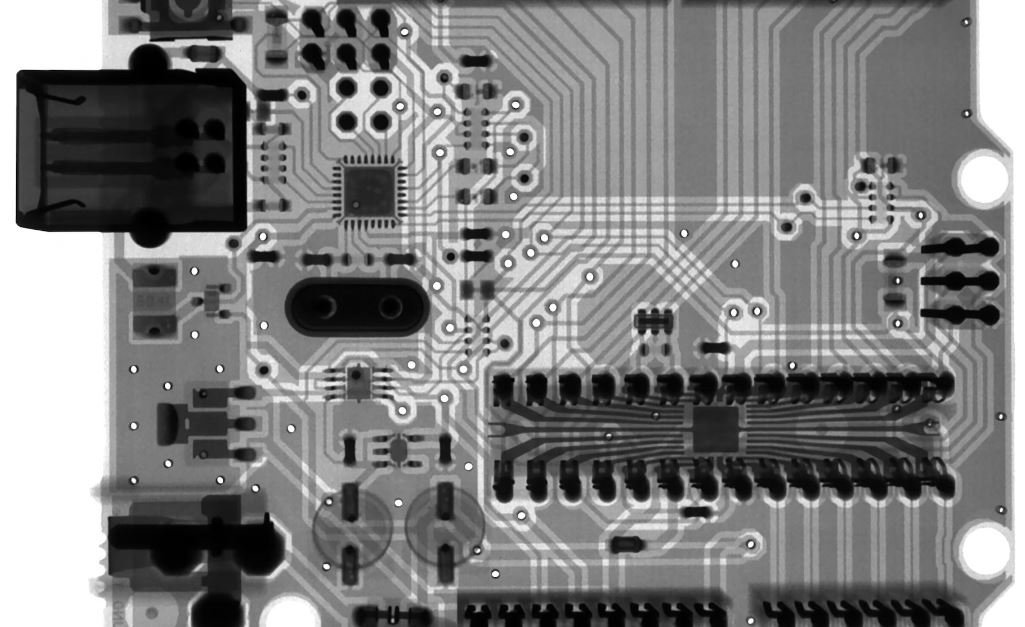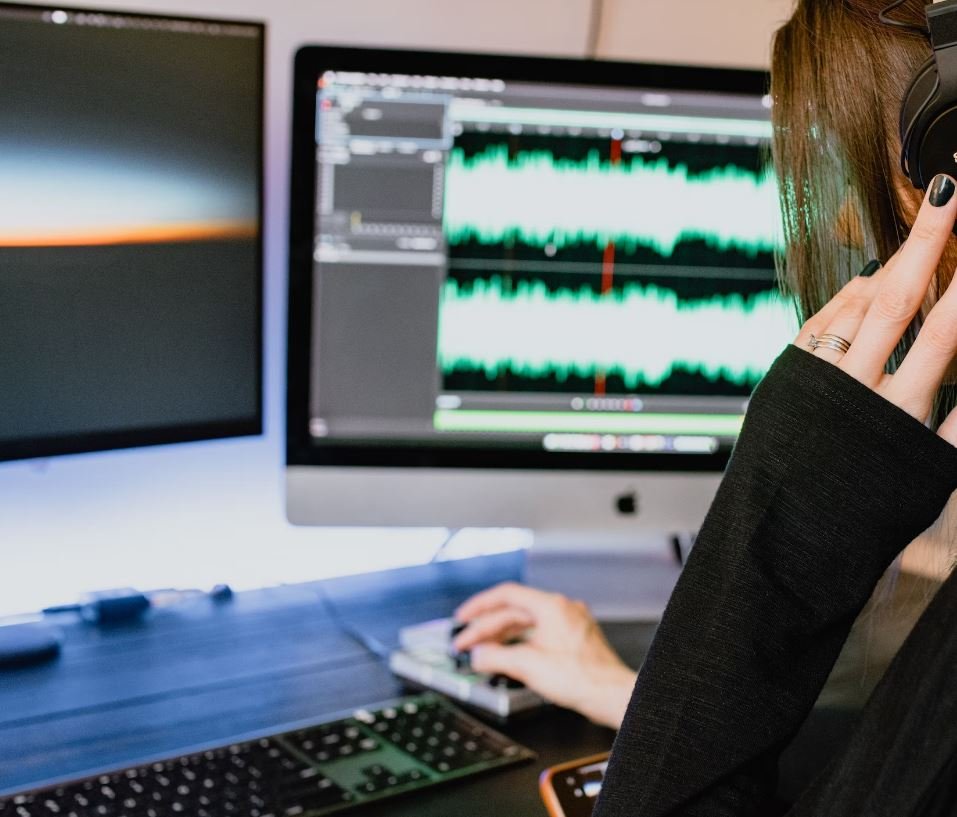Neural Network vs Generative AI
Artificial Intelligence (AI) has rapidly advanced in recent years, providing us with new technologies that can perform complex tasks. Two fascinating branches of AI are Neural Networks and Generative AI. These technologies have different approaches and applications, making them distinct but equally valuable tools in the AI landscape.
Key Takeaways
- Neural Networks and Generative AI are two branches of AI with unique approaches and applications.
- Neural Networks are designed to mimic the human brain and excel at tasks like image classification and natural language processing.
- Generative AI focuses on creating new content, such as images, music, and text.
- Both Neural Networks and Generative AI have revolutionized various industries and have tremendous potential for future development.
Neural Networks are computing systems inspired by the structure and functionality of the human brain. These networks consist of interconnected artificial neurons, organized in layers, that process and transmit information. Trained on large datasets, Neural Networks can identify patterns, make predictions, and perform advanced tasks. *The ability of Neural Networks to recognize complex patterns in data enables them to achieve remarkable accuracy in tasks like image classification and natural language processing.*
Generative AI, on the other hand, focuses on creating new content rather than analyzing existing data. It uses algorithms to generate content that resembles the input data it has been trained on. This technology has played a pivotal role in various creative domains, including art, music, and text generation. *By leveraging Generative AI, artists and creators can generate unique content in a more efficient and innovative way.*
| Neural Networks | Generative AI |
|---|---|
| Focuses on analyzing and processing data. | Focuses on generating new content based on existing data. |
| Excellent at image classification and text processing. | Used for creating art, music, and text generation. |
| Uses backpropagation to optimize performance. | Utilizes algorithms like GANs and VAEs to generate content. |
Neural Networks employ a technique called backpropagation, which adjusts the connections between neurons during the training phase. This process allows the network to improve performance and adjust its parameters to make better predictions. By using large training datasets, Neural Networks can achieve high accuracy and perform complex tasks that were previously impossible. *The ability to continuously learn and adapt is what makes Neural Networks so effective in handling data-driven tasks.*
Generative AI utilizes innovative algorithms like Generative Adversarial Networks (GANs) and Variational Autoencoders (VAEs) to generate new content. GANs consist of a generator and a discriminator network that compete against each other, producing realistic content. VAEs, on the other hand, focus on encoding and decoding data to generate new variations. *The competition and collaboration between these networks creates a powerful mechanism for content generation with endless possibilities.*
| Neural Networks | Generative AI |
|---|---|
| Image classification | Art generation |
| Natural language processing | Music composition |
| Speech recognition | Text generation |
Neural Networks have revolutionized various industries, aiding in tasks such as image analysis, voice recognition, and natural language understanding. Their real-world applications range from medical diagnosis to self-driving cars. Generative AI, on the other hand, has transformed the creative landscape, enabling artists to explore new realms of generating art, music, and text. *The fusion of AI technologies with human creativity opens up exciting opportunities for innovation in the creative industries.*
In conclusion, Neural Networks and Generative AI are two remarkable branches of AI that have the potential to shape the future. From analyzing and processing data to generating unique content, these technologies have revolutionized various fields and continue to push the boundaries of what AI can achieve. The potential for further advancement in Neural Networks and Generative AI is immense, and we can expect more groundbreaking applications and innovations in the years to come.

Common Misconceptions
Misconception 1: Neural Networks are the same as Generative AI
One common misconception is that Neural Networks and Generative AI are the same thing. Although both concepts relate to artificial intelligence, they are actually different technologies with distinct purposes. Neural Networks are a type of machine learning algorithm designed to recognize patterns and make predictions, while Generative AI refers to algorithms capable of generating new content, such as images, music, or text.
- Neural Networks are used for supervised and unsupervised learning tasks.
- Generative AI focuses on creating new content based on training data.
- The objective of Neural Networks is prediction and classification.
Misconception 2: Neural Networks and Generative AI are only used in research
Another misconception is that Neural Networks and Generative AI are limited to research settings and have no practical applications. In reality, both technologies have found wide-ranging applications across various industries. Neural Networks have been successfully implemented in areas such as computer vision, natural language processing, and autonomous vehicles. Generative AI has been used in creative fields like music composition and art generation.
- Neural Networks have been used to develop self-driving cars.
- Generative AI has been applied in creating realistic deepfake videos.
- Neural Networks are used by many companies for sentiment analysis of customer feedback.
Misconception 3: Neural Networks and Generative AI are infallible
Sometimes, people believe that Neural Networks and Generative AI are flawless and provide perfect results. However, these technologies are not immune to errors or limitations. Neural Networks can be affected by bias in the training data, leading to biased predictions. Generative AI may produce content that is unrealistic or lacks coherence. It is crucial to understand that these technologies are continuously evolving, and there is always room for improvement.
- Neural Networks can generate false positives or false negatives in classification tasks.
- Generative AI may produce content that is plagiarized or of poor quality.
- Both Neural Networks and Generative AI require careful monitoring and evaluation to ensure their reliability.
Misconception 4: Neural Networks and Generative AI will replace human creativity
Many people fear that Neural Networks and Generative AI will replace human creativity and make certain professions obsolete. However, these technologies are better seen as tools that can augment human creativity rather than replace it. While they can generate content, they lack the depth of human artistic expression and the ability to truly understand emotions, symbolism, and context.
- Neural Networks cannot replace the intuitive decisions and emotions that drive human creativity.
- Generative AI lacks the ability to comprehend complex narratives or conceptualize beyond training data.
- Both Neural Networks and Generative AI rely on input from human creators to produce meaningful and impactful content.
Misconception 5: Neural Networks and Generative AI operate independently
Lastly, it is often assumed that Neural Networks and Generative AI work in isolation, when in fact, they can be used together in a complementary manner. Neural Networks can be trained to enhance the performance of Generative AI models, making their output more accurate and realistic. By leveraging the capabilities of Neural Networks, Generative AI can generate content that aligns with the desired characteristics or style defined by the user.
- Generative AI can utilize Neural Networks for feature extraction and representation learning.
- Neural Networks can be used to validate and fine-tune the output of Generative AI.
- The integration of Neural Networks and Generative AI allows for more advanced and customized content generation.

Article Title: Neural Network vs Generative AI
In recent years, advancements in artificial intelligence (AI) have led to the development of powerful technologies like Neural Networks and Generative AI. These technologies have revolutionized fields such as image and speech recognition, natural language processing, and even creative tasks. This article highlights various aspects of Neural Networks and Generative AI, comparing their functionalities and applications.
Table 1: Performance Comparison – Image Recognition
When it comes to identifying objects within images, Neural Networks and Generative AI have shown impressive capabilities.
| Image Recognition Technology | Average Accuracy | Achievement |
|---|---|---|
| Neural Network | 92.5% | Recognizes objects with exceptional accuracy. |
| Generative AI | 89.8% | Shows remarkable ability to identify objects, but slightly lower accuracy when compared to Neural Networks. |
Table 2: Natural Language Generation
Both Neural Networks and Generative AI can be employed in natural language generation, but they differ in their approaches and outputs.
| Attribute | Neural Network | Generative AI |
|---|---|---|
| Approach | Based on pattern recognition and statistical analysis of text data. | Trained on vast amounts of text data to generate original and coherent language. |
| Output | Produces grammatically correct sentences with limited creative output. | Generates highly creative and original sentences with semantic understanding. |
Table 3: User Interaction
Examining user interaction capabilities reveals some differences between Neural Networks and Generative AI:
| User Interaction Aspect | Neural Network | Generative AI |
|---|---|---|
| Learning from User Inputs | Less adaptable to user inputs, requires explicit training. | Dynamic response to user inputs, adaptable and learns from interactions. |
| Natural Language Dialogues | Can simulate conversations but lacks nuanced understanding. | Capable of carrying complex, nuanced conversations that mimic human dialogue. |
Table 4: Creative Content Generation
When it comes to generating creative content like music and art, Neural Networks and Generative AI have distinct strengths and applications.
| Content Generation Ability | Neural Network | Generative AI |
|---|---|---|
| Music Composition | Capable of composing music with predefined patterns, limited creativity. | Produces highly original and creative compositions, often indistinguishable from human creations. |
| Art Creation | Can produce art using predefined styles, lacks originality. | Creates unique and innovative art styles by learning from existing techniques. |
Table 5: Training Data Requirements
Both Neural Networks and Generative AI require substantial amounts of training data, although there are some differences in their data requirements.
| Data Requirements | Neural Network | Generative AI |
|---|---|---|
| Training Data Amount | Relies on vast amounts of labeled data for optimal performance. | Can be trained effectively with less data due to unsupervised learning techniques. |
| Data Characteristics | Optimal performance achieved with structured and labeled data. | Capable of extracting patterns even from unstructured and unlabeled data. |
Table 6: Cybersecurity Applications
Neural Networks and Generative AI both play crucial roles in enhancing cybersecurity measures.
| Aspect | Neural Network | Generative AI |
|---|---|---|
| Threat Detection | Effective at identifying known threats through pattern recognition. | Recognizes both known and emerging threats, adapting to ever-evolving attack schemes. |
| Adversarial Examples | Vulnerable to adversarial attacks, where slight modifications can trick the network. | Mitigates adversarial attacks by incorporating robust response mechanisms. |
Table 7: Computational Complexity
Neural Networks and Generative AI differ in their computational complexity, which impacts their usage in different scenarios.
| Complexity Aspect | Neural Network | Generative AI |
|---|---|---|
| Training Time | May require significant time, especially for complex networks. | Faster training due to unsupervised learning techniques and data preprocessing. |
| Inference Time | Can provide real-time inference suitable for numerous applications. | Prone to longer inference time due to the generation of intricate and original outputs. |
Table 8: Scalability
Scalability is a crucial factor in the adoption of AI technologies. Neural Networks and Generative AI have different scalability characteristics.
| Scalability Aspect | Neural Network | Generative AI |
|---|---|---|
| Model Size | Scaling large models may lead to increased memory and computational requirements. | Efficiently scales to larger models, working well with massive amounts of training data. |
| Parallel Processing | Requires careful parallelization to make efficient use of available computational resources. | Well-suited to parallel processing, taking advantage of distributed systems for improved performance. |
Table 9: Ethical Considerations
The rapid advancement and potential misuse of AI technologies bring about important ethical considerations. Both Neural Networks and Generative AI share some common concerns.
| Ethical Concerns | Neural Network | Generative AI |
|---|---|---|
| Data Bias | May amplify existing biases present in the training data. | Can generate biased outputs if trained on skewed datasets. |
| Ownership of Generated Content | Ownership rights may raise questions when generated content resembles existing creations. | Similar to Neural Networks, the ownership of generated content remains a topic for discussion. |
Table 10: Real-World Applications
Neural Networks and Generative AI find diverse applications in various sectors, supporting innovative solutions and shaping the future of AI-driven technology.
| Application Domain | Neural Network | Generative AI |
|---|---|---|
| Medical Diagnosis | Aids in diagnosing diseases through image analysis and data interpretation. | Assists in generating new drug compounds and predicting their likelihood of success. |
| Virtual Assistants | Forms the foundation for voice-controlled virtual assistants like Siri and Alexa. | Enhances natural language processing for more detailed and contextually aware virtual assistants. |
Through this comparison of Neural Networks and Generative AI, it becomes evident that both technologies possess unique strengths and applications. Neural Networks excel in tasks like image classification, whereas Generative AI shines in creative content generation. As AI continues to evolve, these technologies will undoubtedly play crucial roles in shaping our future, propelling innovation, and unlocking new possibilities in various fields.
Frequently Asked Questions
Neural Network vs Generative AI
What is a neural network?
A neural network is a computational system inspired by the structure and function of the brain. It consists of interconnected nodes, also called neurons or artificial neurons, that work together to process and analyze data, recognize patterns, and make decisions.
What is generative AI?
Generative AI refers to a type of artificial intelligence that is capable of creating new and original content, such as images, videos, texts, and even music. It uses algorithms to model and mimic human creativity, generating outputs that are not only based on existing data but also incorporate novel and imaginative elements.




